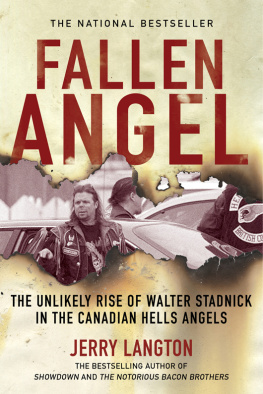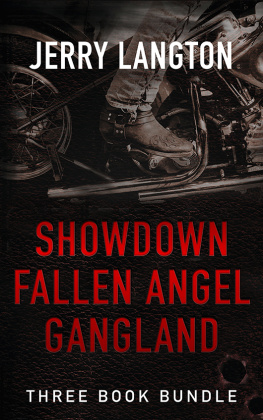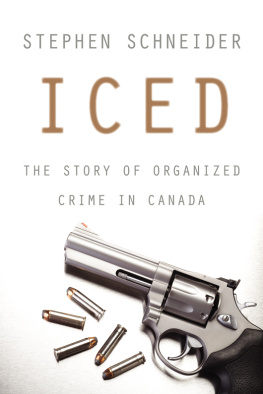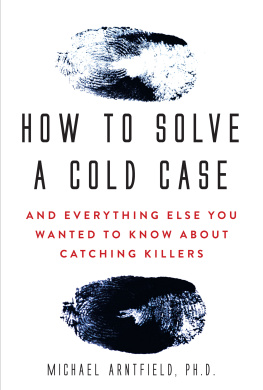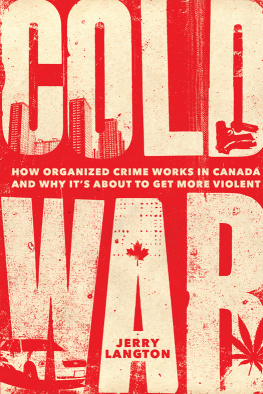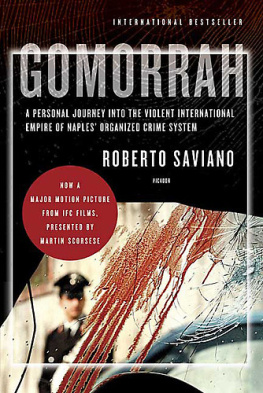Jerry Langton - Cold War: How Organized Crime Works in Canada and Why Its Just About to Get More Violent
Here you can read online Jerry Langton - Cold War: How Organized Crime Works in Canada and Why Its Just About to Get More Violent full text of the book (entire story) in english for free. Download pdf and epub, get meaning, cover and reviews about this ebook. year: 2015, publisher: Harper Collins, genre: Detective and thriller. Description of the work, (preface) as well as reviews are available. Best literature library LitArk.com created for fans of good reading and offers a wide selection of genres:
Romance novel
Science fiction
Adventure
Detective
Science
History
Home and family
Prose
Art
Politics
Computer
Non-fiction
Religion
Business
Children
Humor
Choose a favorite category and find really read worthwhile books. Enjoy immersion in the world of imagination, feel the emotions of the characters or learn something new for yourself, make an fascinating discovery.
- Book:Cold War: How Organized Crime Works in Canada and Why Its Just About to Get More Violent
- Author:
- Publisher:Harper Collins
- Genre:
- Year:2015
- Rating:3 / 5
- Favourites:Add to favourites
- Your mark:
- 60
- 1
- 2
- 3
- 4
- 5
Cold War: How Organized Crime Works in Canada and Why Its Just About to Get More Violent: summary, description and annotation
We offer to read an annotation, description, summary or preface (depends on what the author of the book "Cold War: How Organized Crime Works in Canada and Why Its Just About to Get More Violent" wrote himself). If you haven't found the necessary information about the book — write in the comments, we will try to find it.
Cold War: How Organized Crime Works in Canada and Why Its Just About to Get More Violent — read online for free the complete book (whole text) full work
Below is the text of the book, divided by pages. System saving the place of the last page read, allows you to conveniently read the book "Cold War: How Organized Crime Works in Canada and Why Its Just About to Get More Violent" online for free, without having to search again every time where you left off. Put a bookmark, and you can go to the page where you finished reading at any time.
Font size:
Interval:
Bookmark:
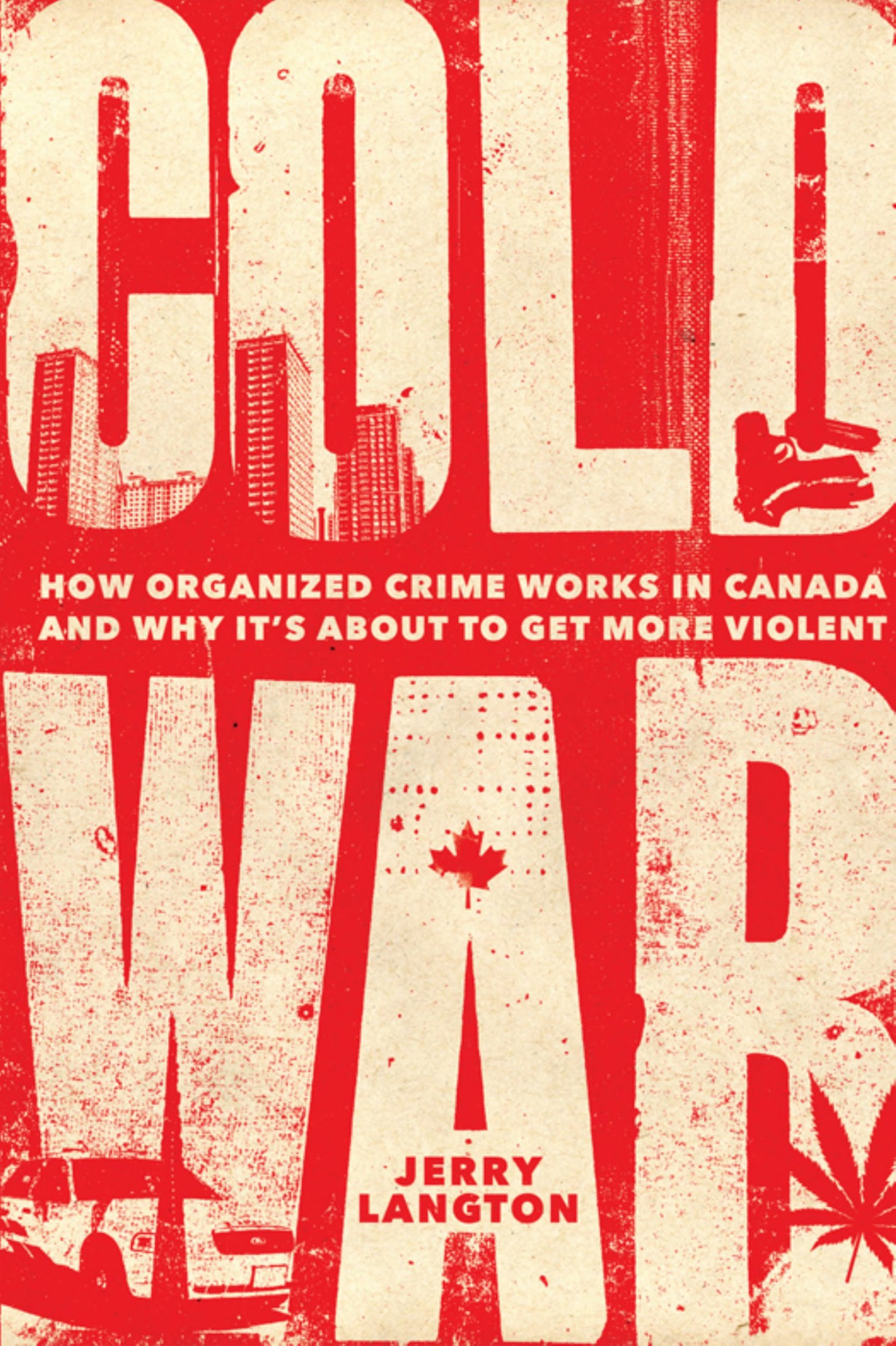
WAR
How Organized Crime Works in Canada and
Why Its Just About to Get More Violent
JERRY LANGTON

To my own gang, T, Dame and HooHoo
When the news broke that Toronto mayor Rob Ford had admitted to smoking crack, I received plenty of calls and e-mails from people all over the world who wanted to know exactly what was going on in Toronto.
Most of them came from the US. After having lived in New York City for a very long time, I still have plenty of friends in the United States. Theyre often quite surprised to find out that I write about organized crime in Canada because they didnt know there was any organized crime, or even regular crime, up here. Their media, as well as what they see of ours, generally portray Canada as a relative safe zone located north of a crime-infested neighbor to the south.
Its not actually true. While the US certainly has a much higher murder rate (which is often the only statistic used by media to compare national crime rates even though its not a good indicator of actual violent crime), the overall violent crime and property crime rates for both countries are about the same, according to United Nations crime statistics, with Canada having higher assault, and especially sexual assault, rates. But the cultural differences and memories of more dangerous times, along with the American hope for a better place and Canadas habit of patting itself on the back, keep those beliefs intact.
So it was with much surprise that my American friends reacted to Rob Fords November 2013 admission that he had smoked crack. My American friends were shocked to learn that we even had crack up here and that it was supplied by street gangs with links to international organized crime. My Canadian friends seemed irked that the world was finally learning that fact, as though it were a family secret theyd rather keep quiet.
In truth, the history of organized crime has linked the two countries (and others) for a century. When it was Canada that first instituted alcohol prohibition in 1918, gangsters brought liquor and beer in from the US. For a short period of time, both countries (except the province of Quebec, which gave up the idea after a few months), had Prohibition, leading to something of a gangsters paradise. Then, after Canada dropped Prohibition while it lingered in the US, illegal liquor started going south instead of north. Thats the period that people in both countries still tend to talk about when they refer to Prohibition, and what gangster movies often portray.
When Prohibition ended in both countries, the bootleggers and smugglers made an informed business decision and turned to moving drugs. After brief introduction periods, drugs like heroin, cocaine, methamphetamine and others become immensely popular among users and lucrative for sellers. In fact, it was the French Connectionan operation that moved tons of heroin from Southeast Asia and Turkey through France, then through Canada to the USthat actually established the Italian Mafia families as the dominant crime organizations in North America. Despite the fact that Canadians like John Papalia and Vic Cotroni were key primary players and that the bulk of the drugs and money went through Canada, there was little mention of this country in the classic film about the operation.
As heroins allure faded when the public began to realize what it did to addicts, it was largely replaced by cocaine, which enriched many Canadian crime organizations, some of which used Montreal as a distribution point for the northeastern US, helping to fuel the wildly violent crack wars of the late 1980s and early 1990s.
Later, Canadian organized crime groups diversified and regularly pushed billions of dollars worth of drugs, cash, weapons and other products over the border. In the late 1990s and early 2000s, things heated up as the value of British Columbiagrown marijuana began to increase rapidly. Suddenly, the Lower Mainland region of BC was overrun by growers, dealers, smugglers and would-be gangsters who started shooting it out on the streets.
Since I have been writing about organized crime in Canada, I have been asked the same question in almost every interview. People always want to know if legalizing marijuana would reduce the amount of organized crime in this country.
The answer, disappointingly, is yes at first, but ultimately no. Marijuana, of course, makes up a huge proportion of the illegally traded commodities and services in Canada. Naturally, making it legal would reduce the amount traded by organized crime groups within Canada. But it would not stop them from exporting it to other places, just like in the days of Prohibition. As it stands now, Canadian-grown marijuana is popular not just at home and in the US, but also in places like Japan and Australia. Making marijuana legal in Canada could easily result in organized crime groups exporting it to the rest of the world in greater amounts, just as happened with alcohol when the US had Prohibition and Canada did not. It should be noted that two US statesColorado and Washington, which borders BChave made recreational marijuana legal, and the response from the public has been phenomenal. Retail stores have experienced long lineups, million-dollar sales days and empty storerooms. Its too early yet to see legalizations effect on organized crime in those states but it certainly hasnt made a significant difference.
Even if marijuana were magically made legal all around the world on the same day, organized crime groups would find other products to move, like heroin, cocaine, meth, steroids or, as is currently popular in many parts of Canada, prescription drugs. Keep in mind too that there are always non-drug products to move, like weapons, prostitutes and stolen goods (particularly cars and car parts to China). That wouldnt stop, just like it didnt when Prohibition was finally lifted.
And even if all of that were made legal, there would still be the old-fashioned organized crime activities, like extortion, kidnapping, illegal gambling, shady investments and other strong-arm moves. They never stop.
Its foolish to think that organized crime isnt around and mawkish to believe it can be legislated out of existence. Instead, its a better idea to get to know who the players are.
Thats why I wrote Cold War. Following the evolution of organized crime in Canada makes it much easier to understand which factors incubate organized crime, what helps it to mature and what prompts it to become more violent.
The title, Cold War, reflects the fact that as organized crime has evolved in this country, its players have always fallen into one of two sides, and those two sides have become interconnected. In every community where organized crime exists, its practitioners end up on one side and invariably hate the other side. Take, for example, 14-year-old Winnipeg crack dealer Sirak Shaggy Okbazion. He was a member of a street gang called the Mad Cowz, which was made up primarily of immigrants from the Horn of Africa, including Sudanese, Somalis and Eritreans like himself. They wore white, defended their territory against gangs like B-Side, which was also composed of East African immigrants, and received product and some modicum of support from a Native Canadian gang called the Native Syndicate. The senior partners, the Native Syndicate, wore black, fought turf wars with Native gangs like the Indian Posse and the Manitoba Warriors, and bought their drugs from a biker gang called the Zig Zag Crew. The Zig Zag Crew were a support club, essentially a minor-league affiliate, for the Hells Angels. They wore white-and-red patches to show their allegiance to the Hells Angels red and white, and along with the Hells Angels, faced off against biker gangs like the Spartans, the Outlaws, the Bandidos and the Rock Machine. Of course, the Canadian Hells Angels started in, and were originally mostly run from, Montreal. And the Hells Angels were established in Montreal and gained dominance there and throughout Canada because of their ties to the Italian Mafia. Depending on the time, the Canadian Hells Angels have been allied with either the Sicilian or Calabrian factions of the Mafia. So, Shaggy certainly didnt know it, but he was a foot soldier in a cold war between the Sicilians and Calabrians. Just like the proxy wars of the Cold War between the US and the USSR, the people selling drugs on Canadian streets might have their own motivations for doing so, but they are also representing one of the two superpowers. Shaggy, through the Mad Cowz, the Native Syndicate, the Zig Zag Crew and the Hells Angels, was representing, defending and strengthening the Sicilian families in Montreal. By default, his opponents in B-Sidewho shot him three times in the chest and killed him outside a crack house he workedwere, through the Manitoba Warriors, the Bandidos and others, representing the interests of the Calabrians. The names and alliances sometimes changethe Mad Cowz are now the African Mafia, and the Bandidos basically morphed back into the Rock Machinebut the cold war continues, occasionally falling into violence. There are some deviations from the normsome British Columbiabased gangs rely on Asian connections for drugs instead of on the Italian Mafiabut every guy selling heroin in Surrey, crack in Hamilton or prescription drugs in Corner Brook is on one side or the other, linked to one side or the other, and is putting his life on the line because the other side wants his territory.
Font size:
Interval:
Bookmark:
Similar books «Cold War: How Organized Crime Works in Canada and Why Its Just About to Get More Violent»
Look at similar books to Cold War: How Organized Crime Works in Canada and Why Its Just About to Get More Violent. We have selected literature similar in name and meaning in the hope of providing readers with more options to find new, interesting, not yet read works.
Discussion, reviews of the book Cold War: How Organized Crime Works in Canada and Why Its Just About to Get More Violent and just readers' own opinions. Leave your comments, write what you think about the work, its meaning or the main characters. Specify what exactly you liked and what you didn't like, and why you think so.



